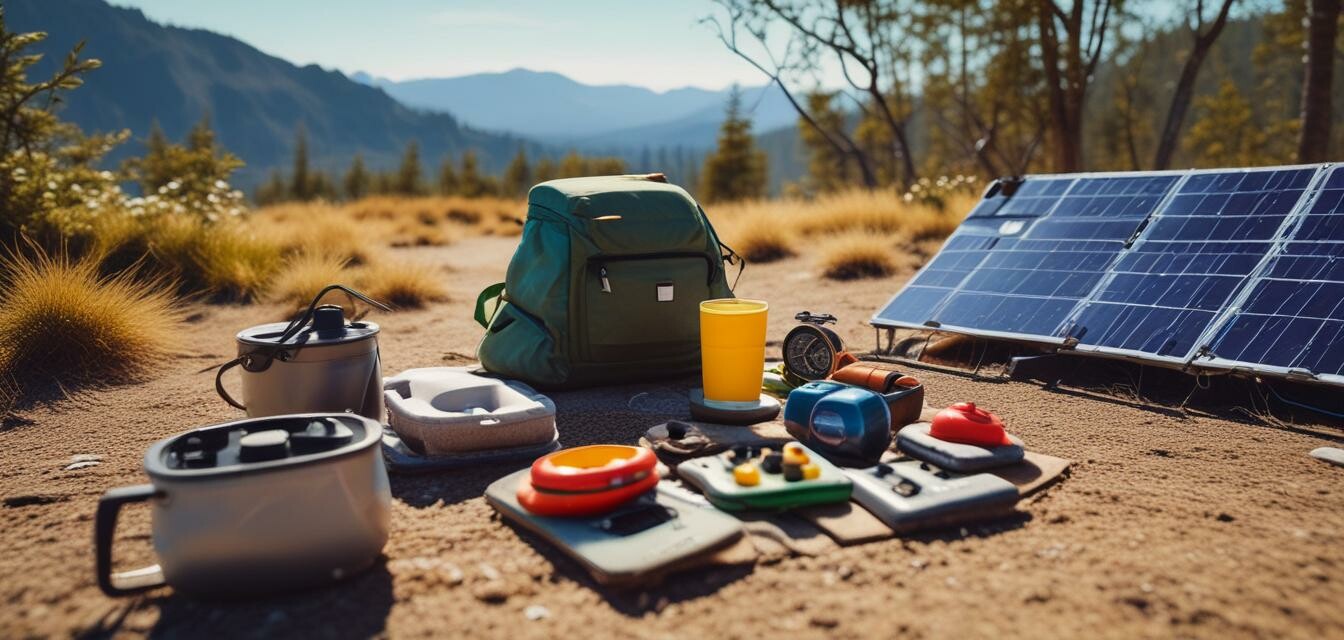
The best techniques for charging devices with solar power
Key Takeaways
- Understand the solar power requirements for your devices.
- Use high-quality solar panels designed for portability.
- Ensure proper positioning of solar panels for optimal sunlight.
- Consider battery storage options to manage energy supply effectively.
- Regular maintenance of your solar gear helps prolong its life.
As camping becomes more popular, the need for charging devices away from traditional power sources also increases. Solar power presents a reliable and sustainable way to keep your devices charged while exploring the great outdoors. In this article, we’ll discuss the best techniques for utilizing solar energy effectively, ensuring reliability and efficiency while you enjoy your camping adventures.
Understanding solar power for charging
Solar power relies on sunlight to generate electricity. Photovoltaic panels convert sunlight into usable energy, which can then be used to charge various devices. The key to effective charging lies in understanding how solar panels work and the power needs of your devices.
How solar panels work
Solar panels consist of cells that capture sunlight and convert it into electricity. There are various types of solar panels available, including monocrystalline, polycrystalline, and thin-film. Each type has its efficiency rates and suitability for different scenarios.
Choosing the right solar panel
Selecting the right solar panel can significantly impact your charging experience. Below is a comparison table highlighting the differences between common types of solar panels:
| Type | Efficiency (%) | Weight (lbs) | Cost | Best for |
|---|---|---|---|---|
| Monocrystalline | 15-22 | Light | $$$ | High efficiency and space constraints |
| Polycrystalline | 13-16 | Light | $$ | General purposes |
| Thin-film | 10-12 | Heavy | $ | Bigger spaces with weight restrictions |
Best practices for charging devices
To ensure that your devices stay charged throughout your camping trip, consider the following best practices:
1. Assess your device's power needs
Before packing your devices, calculate their power requirements in watt-hours. This helps determine how many solar panels you need and what type of battery bank is appropriate.
2. Properly position your solar panels
Solar panels should be placed where they can receive maximum sunlight exposure. Here are some tips for positioning:
- Face the solar panel directly at the sun.
- Adjust its angle according to the time of day.
- Avoid shaded areas created by trees or other structures.
3. Use a solar charge controller
A solar charge controller regulates the voltage and current from the solar panels to the battery. This ensures that devices are not damaged due to excessive current flow.
4. Consider portable power banks
Utilizing a portable power bank with solar charging capabilities can greatly enhance your camping experience. These batteries can store energy collected from solar panels for use when sunlight is limited. Remember to periodically check their charge status.
5. Regular maintenance of solar gear
Keeping your solar gear clean and well-maintained will ensure it operates at optimal efficiency. Here are a few maintenance tips:
- Clean the solar panels regularly to remove dust and debris.
- Check for any loose connections or damage.
- Store the gear properly to prevent physical damage.
Tips for specific devices
Charging different types of devices may require unique considerations. Below is a list of common camping devices and tips on how to charge them with solar power:
- Smartphones: Use a portable solar charger designed specifically for phones.
- Laptops: Ensure that the solar panel’s output matches your laptop’s requirements.
- Cameras: Charging camera batteries directly through the solar panel is often more efficient than using a power bank.
- Lanterns and lights: Opt for solar lanterns that can recharge during the day.
Solar charging campsites
When selecting a camping site, look for locations that have an open sky and proximity to sunlight, which maximizes your solar charging capabilities. Some campsites even offer solar charging stations, enhancing their sustainability efforts. Familiarize yourself with your camping site's facilities to ensure the best experience.
Branding your solar experience
Many camping enthusiasts are embracing solar power. Not only does it offer a sustainable means of energy, but it also comes with its branding of eco-friendliness. Solar charging has become synonymous with modern, responsible camping. Make the best of this opportunity by sharing your solar adventures through social media and camping communities!
Pros
- Eco-friendly energy source.
- Reduced dependency on traditional power sources.
- Portable and convenient for camping.
- Potential cost savings on energy consumption.
Cons
- Initial equipment cost can be high.
- Weather-dependent charging efficiency.
- Storage capacity limitations with batteries.
- Requires maintenance and care.
Conclusion
Charging your devices with solar power while camping is not just a trend; it’s a smart and sustainable choice. By understanding your power needs and employing best practices, you can enjoy reliable energy throughout your adventures. For more expert insights and practical tips on utilizing solar energy, check out our Expert Tips category. Happy camping!